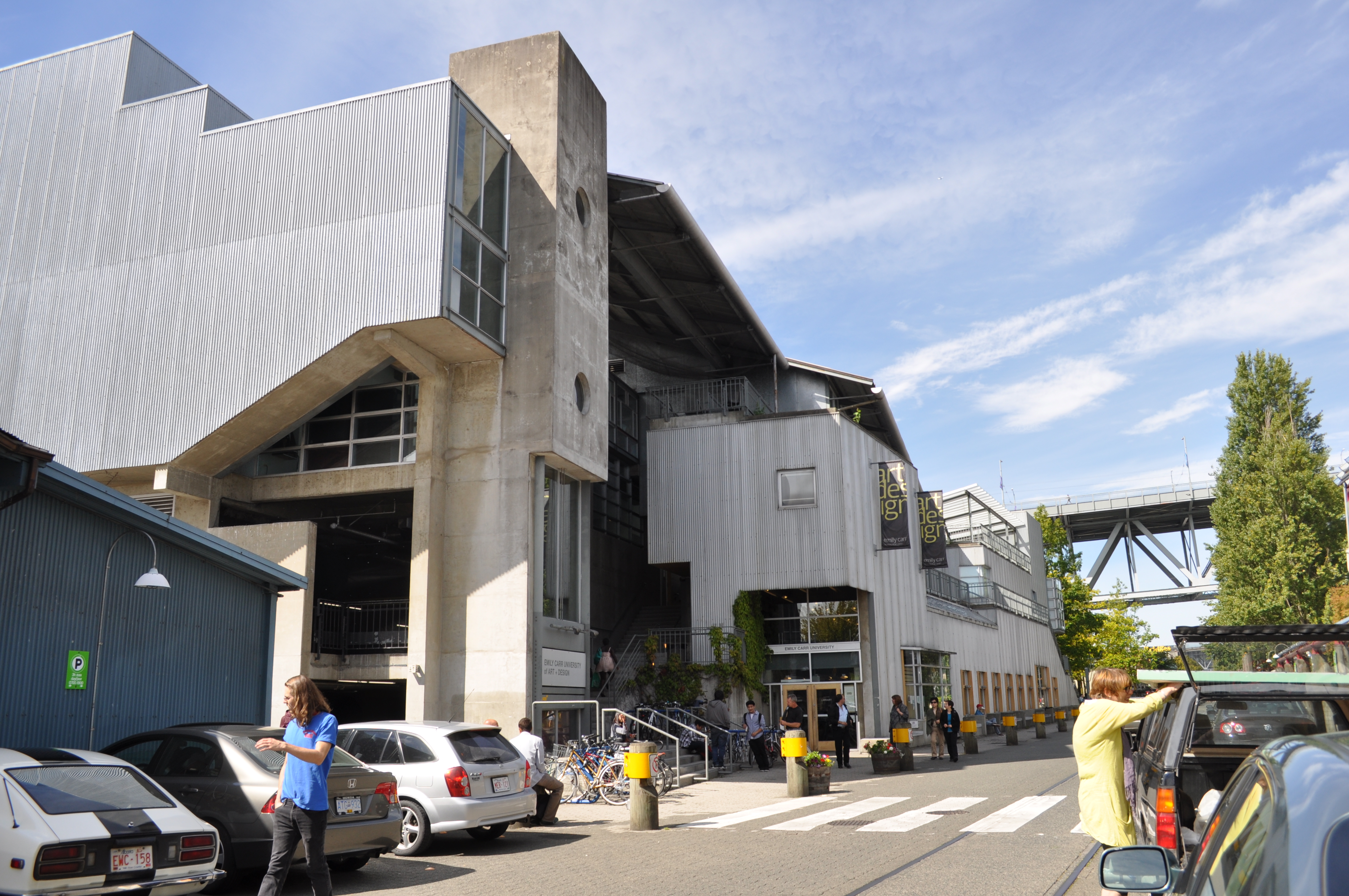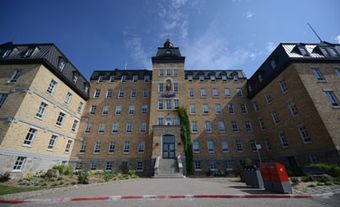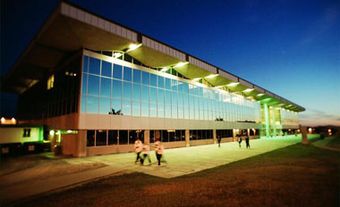
Background and Founding
The British Columbia Art League was established in 1921 to promote the creation of an art school and an art gallery. Founded in 1925 as the Vancouver School of Decorative and Applied Arts, the school was initially situated on the top floor of the Vancouver School Board building at 590 Hamilton Street (the Vancouver Art Gallery was founded six years later in 1931). The school was renamed the Vancouver School of Art in 1936, at which time it was moved to a nearby location at the Vancouver (Central) High School.
Early Faculty and Teaching Focus
Among the school’s original teaching staff were sculptor Charles Marega, whose work adorns the entrance to the Lion’s Gate Bridge in Stanley Park and the British Columbia Parliament buildings in Victoria; artist Jock Macdonald, the pioneering abstract painter and founding member of Painters Eleven; and Group of Seven member Frederick Varley.
Prominent instructors during the Second World War included Bruno and Molly Lamb Bobak, Fred Amess and B.C. Binning, who formed the “Art in Living Group” in 1943. In this program, students and teachers examined urban housing and neighbourhoods, and presented their findings in four exhibitions at the Vancouver Art Gallery.
Later, during the early post-war period, artist-instructors such as Gordon Smith and Jack Shadbolt brought their knowledge of modern abstract painting to the school. At the same time, a new emphasis on crafts was introduced with the addition of ceramists Reg Dixon, David Lambert and Robert Weghsteen to the teaching staff, coinciding with the School's move to larger facilities at the renovated School Board building in 1952.
Expansion and New Name
With the move to a new, larger building in 1963, the School's program of instruction expanded to include photography and film animation, as well as performance and installation art. The artistic and social experimentation that characterized the school in the 1960s extended to educational practices as well: illustration and art history classes were optional, grades largely eliminated, and students tended to work on self-directed projects.

Further growth occurred in the 1970s as the school moved into rented facilities at the Pacific National Exhibition (PNE) and studio spaces on Water Street in Gastown. The School achieved broader administrative control in 1978 when it attained independent art college status with a provincial mandate. Coinciding with its move to new, larger facilities on Granville Island in 1980, the institution was renamed the Emily Carr College of Art by the provincial government in recognition of Emily Carr — the province’s, and one of Canada’s, most famous artists. At the time, students were concerned that naming the college after Emily Carr would detract from the school’s focus on contemporary art and life.
The 1980s saw the opening of the Charles H. Scott Gallery and the establishment of the Industrial Design Department, along with an outreach program that included the implementation of workshops in remote communities, part-time studies and summer classes, and educational television programming such as Mark & Image (1988), developed in collaboration with the Knowledge Network.
Digital Evolution
The achievement of degree-granting status (Bachelor of Fine Arts and Bachelor of Design) brought a name change from College to Institute in 1995. Facilities were then developed to allow students to explore digital technology. The first decade of the new millennium has seen Emily Carr University develop collaborative relationships with other universities in the province along with a new emphasis on critical and cultural studies. The school opened its Intersections Digital Studio, a dedicated research centre for new technologies, in 2006, and that same year began offering a Master of Applied Arts degree, with streams in design, visual art and media arts.
University Status
In 2008, by government decree, Emily Carr Institute of Art and Design achieved university status to become Emily Carr University of Art and Design. The university began offering an increased number of academic courses in art history, design history, English, humanities, media history, science and the social sciences.
Great Northern Way Campus
As of 2016, Emily Carr University occupied two large buildings on Granville Island and three satellite campuses in the city. It boasted an enrolment of over 1,250 full-time students and more than 3,200 continuing studies students taught by a combined full-time and sessional staff of 172 instructors.
In September 2017, Emily Carr University moved to a purpose-built, 290,000 sq. ft. campus in the formerly industrial False Creek Flats neighbourhood southeast of downtown Vancouver. Completed for $123 million, it was designed by Diamond and Schmitt Architects on a site granted jointly to Emily Carr University, Simon Fraser University and the British Columbia Institute of Technology. All three institutions are involved in the Centre for Digital Media, which adjoins the new Emily Carr campus. There is hope that the presence of the new campus, which includes a 3D printing studio, will revitalize the area by attracting design and digital technology businesses.
(See also Art Education; Contemporary Trends in Art.)

 Share on Facebook
Share on Facebook Share on X
Share on X Share by Email
Share by Email Share on Google Classroom
Share on Google Classroom



